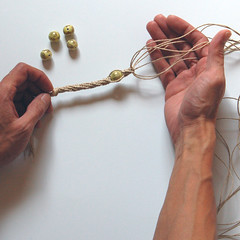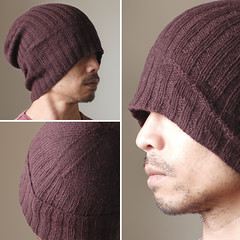

Over the last week or two I've been digging around. This summer has me in an experimental mood, and I wanted to do something I haven't done in a while. After picking up Jacqui Carey's Japanese Braiding: The Art of Kumihimo at the library I remembered all those hemp necklaces I used to make. So I decided to go for it, working a three strand split weave with these painted porcelain beads.

While digging for the beads, I found these carnelian rounds and oblongs. I honestly don't remember where I got these, but they don't seem to have been graded. There are some great quality pieces in here with perfect color/opacity contrasts, yet they were strung together with some lower quality ones. I isolated the rounds to make these two necklaces, using the oblongs for the backs. I didn't string the rest of the oblongs though, prefering the fruit-like brightness of these irregular rounds. They remind me of pomegranate seeds and giant orange cells.
These make me glad that I save things. These are materials and techniques I was using over fifteen years ago.







